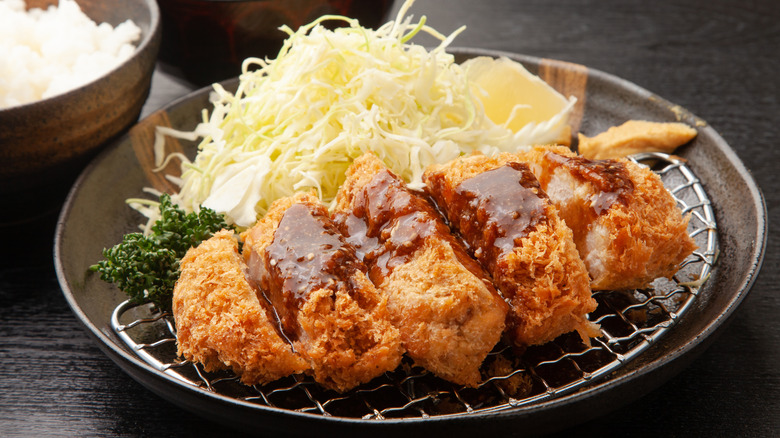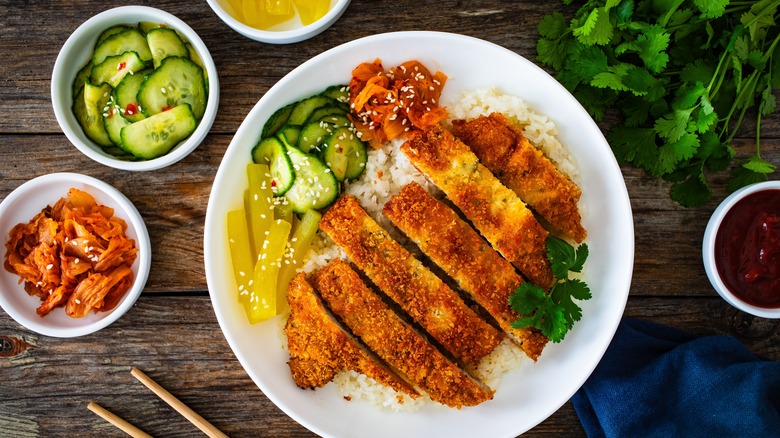The Right Way To Serve Your Katsu Dishes, According To A Chef
We may receive a commission on purchases made from links.
It's quicker than you think to make katsu dishes. To nail the main component, you'll just need to fry your protein of choice — which is commonly crispy chicken or pork, although tofu katsu can make for a delicious dish as well. In general, breading and frying your dish shouldn't take more than half an hour, which gives you plenty of time to come up with other ingredients to serve it with.
To figure out the best way to serve your katsu dishes, we sought an expert's opinion. Lucy Seligman is a restaurant critic, food historian, writer, and the owner of Lucy's Kitchen cooking school. She's also published two cookbooks: "The Wonderful World of Osechi: Japanese New Year's Recipes" and "Easy Japanese Recipes for the Home Cook," which are both available for purchase through Kindle and on Amazon. "Any katsu dish must be served with a mound of raw green shredded cabbage (drizzle with tonkatsu sauce as well as on whatever type of katsu you are making), miso soup and lots of freshly made Japanese white rice!" Seligman said to Tasting Table.
Make your katsu dishes saucy and sour
You can pick up bottles of tonkatsu sauce, such as option from Bull Dog on Amazon. However, it's not difficult to make tonkatsu sauce at home, which will give you more control over the ingredients. Our simple recipe for tonkatsu sauce just includes ginger, ketchup, soy sauce, brown sugar, and mirin, a Japanese rice wine. But you can also throw in a splash of lemon juice for balance, garlic, Dijon mustard, sugar, and even Worcestershire sauce. Unlike American-style barbecue sauces, there's no need to heat up your tonkatsu sauce — just stir the ingredients together and drizzle everything over your protein and shredded cabbage, like Seligman suggests. Katsu proteins tend to be seasoned pretty simply (often with just salt and pepper), so this condiment will add more dimension with sweet, savory, and tangy flavors.
If you'd rather flavor your cabbage with a classic Japanese salad dressing, however, Seligman offers a plethora of recipes you can use to switch it up. But once you've assembled your plate with white rice, protein, and cabbage, along with a bowl of miso soup, she advises one final step: "Add in some Japanese pickles and it makes for a perfect and very satisfying meal!" she said. Also known as tsukemono, you'll find these in different varieties, but we'd go with fukujinzuke, which is made from Japanese radishes, eggplants, lotus roots, and cucumber.

